#Adam Goldenberg
Photo
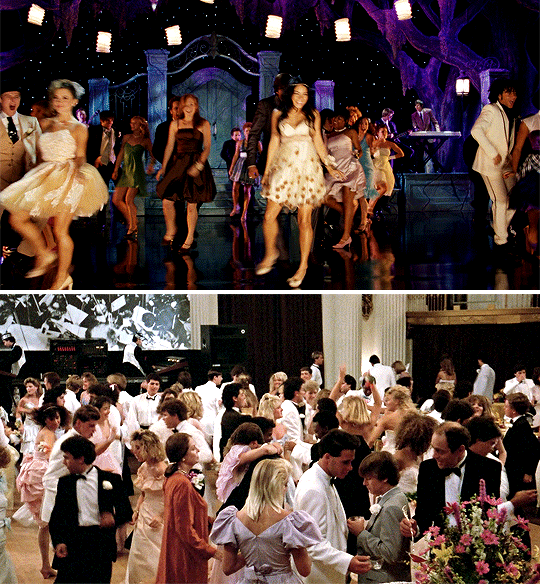
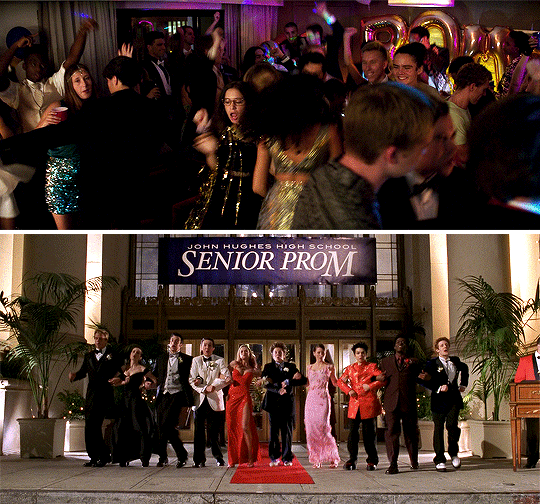

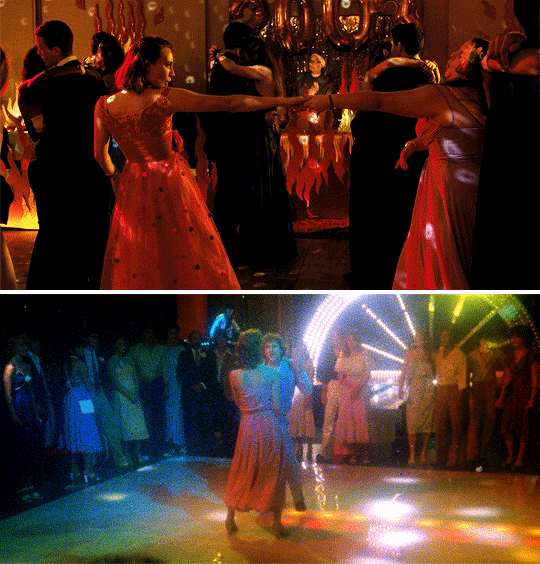
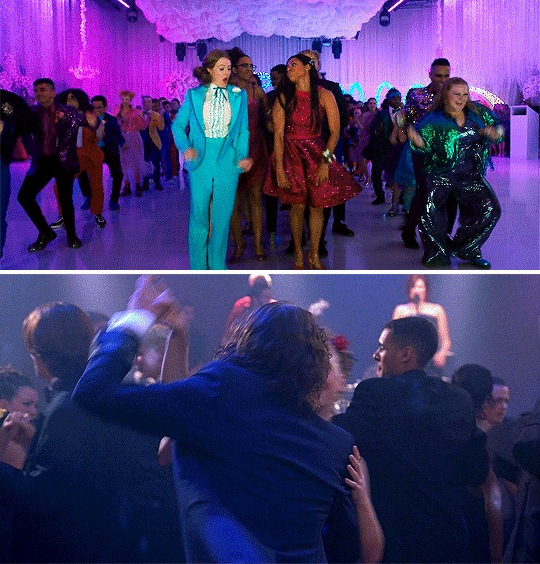
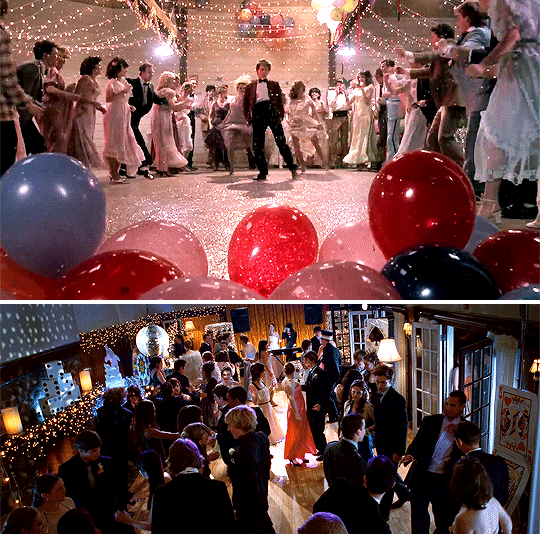


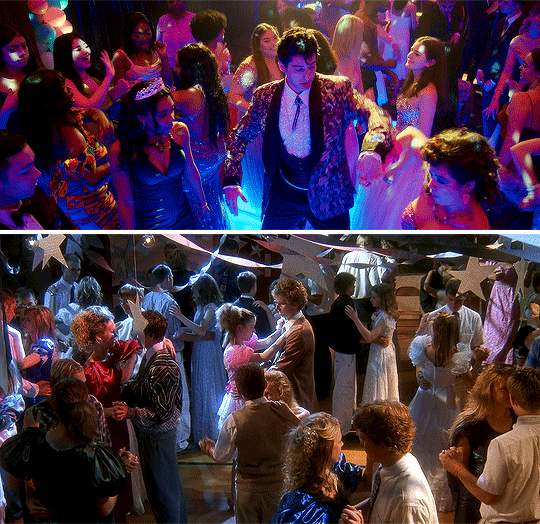

Dancing in Film: Prom dances
High School Musical 3: Senior Year (2008) dir. Kenny Ortega
Pretty in Pink (1986) dir. Howard Deutch
Blockers (2018) dir. Kay Cannon
Not Another Teen Movie (2001) dir. Joel Gallen
Jawbreaker (1999) dir. Darren Stein
Back to the Future (1985) dir. Robert Zemeckis
Lady Bird (2017) dir. Greta Gerwig
Prom Night (1980) dir. Paul Lynch
The Prom (2020) dir. Ryan Murphy
10 Things I Hate About You (1999) dir. Gil Junger
Footloose (1984) dir. Herbert Ross
Twilight (2008) dir. Catherine Hardwicke
Valley Girl (2020) dir. Rachel Lee Goldenberg
Never Been Kissed (1999) dir. Raja Gosnell
The Spectacular Now (2013) dir. James Ponsoldt
Carrie (1976) dir. Brian De Palma
The Prom Pact (2023) dir. Anya Adams
Napoleon Dynamite (2004) dir. Jared Hess
To All The Boys I’ve Loved Before: Always and Forever (2021) dir. Michael Fimognari
She’s All That (1999) dir. Robert Iscove
#filmedit#disneyedit#musicaledit#80sedit#90sedit#00sedit#teendramaedit#usergina#userk8#my edit#filmchoreo#because it always needs to be said:#not an exhaustive edit just an exhausted editor#but also i deliberately did not include anything that did not use the word prom in its script#(blockers is the afterparty and hsm3 is before the night of but eh)
1K notes
·
View notes
Text
Critics Choice Awards 2024: Christopher Nolan, Oppenheimer, Barbie, Succession, The Bear lead the wins
The Critics Choice Awards 2024 celebrated cinematic and television excellence on Sunday night, January 14, 2024. Chelsea Handler returned as the host for the evening. Christopher Nolan’s Oppenheimer shone, securing eight wins, including Best Picture and Best Director though Cillian Murphy missed the Best Actor win. Greta Gerwig’s Barbie claimed six awards, winning in categories like Best Comedy and Best Original Screenplay. Emma Stone earned Best Actress for Poor Things. On the TV front, Succession, The Bear, and Beef led the wins.

FILM
BEST PICTURE
American Fiction
Barbie
The Color Purple
The Holdovers
Killers of the Flower Moon
Maestro
Oppenheimer - WINNER
Past Lives
Poor Things
Saltburn
BEST ACTOR
Bradley Cooper, Maestro
Leonardo DiCaprio, Killers of the Flower Moon
Colman Domingo, Rustin
Paul Giamatti, The Holdovers - WINNER
Cillian Murphy, Oppenheimer
Jeffrey Wright, American Fiction
BEST ACTRESS
Lily Gladstone, Killers of the Flower Moon
Sandra Hüller, Anatomy of a Fall
Greta Lee, Past Lives
Carey Mulligan, Maestro
Margot Robbie, Barbie
Emma Stone, Poor Things - WINNER
BEST SUPPORTING ACTOR
Sterling K. Brown, American Fiction
Robert De Niro, Killers of the Flower Moon
Robert Downey Jr., Oppenheimer - WINNER
Ryan Gosling, Barbie
Charles Melton, May December
Mark Ruffalo, Poor Things
BEST SUPPORTING ACTRESS
Emily Blunt, Oppenheimer
Danielle Brooks, The Color Purple
America Ferrera, Barbie
Jodie Foster, Nyad
Julianne Moore, May December
Da'Vine Joy Randolph, The Holdovers - WINNER
BEST YOUNG ACTOR/ACTRESS
Abby Ryder Fortson, Are You There God? It's Me, Margaret.
Ariana Greenblatt, Barbie
Calah Lane, Wonka
Milo Machado Graner, Anatomy of a Fall
Dominic Sessa, The Holdovers - WINNER
Madeleine Yuna Voyles, The Creator
BEST ACTING ENSEMBLE
Air
Barbie
The Color Purple
The Holdovers
Killers of the Flower Moon
Oppenheimer - WINNER
BEST DIRECTOR
Bradley Cooper, Maestro
Greta Gerwig, Barbie
Yorgos Lanthimos, Poor Things
Christopher Nolan, Oppenheimer - WINNER
Alexander Payne, The Holdovers
Martin Scorsese, Killers of the Flower Moon
BEST ADAPTED SCREENPLAY
Kelly Fremon Craig, Are You There God? It's Me, Margaret.
Andrew Haigh, All of Us Strangers
Cord Jefferson, American Fiction - WINNER
Tony McNamara, Poor Things
Christopher Nolan, Oppenheimer
Eric Roth and Martin Scorsese, Killers of the Flower Moon
BEST ORIGINAL SCREENPLAY
Samy Burch, May December
Alex Convery, Air
Bradley Cooper & Josh Singer, Maestro
Greta Gerwig & Noah Baumbach, Barbie - WINNER
David Hemingson, The Holdovers
Celine Song, Past Lives
BEST CINEMATOGRAPHY
Matthew Libatique, Maestro
Rodrigo Prieto, Barbie
Rodrigo Prieto, Killers of the Flower Moon
Robbie Ryan, Poor Things
Linus Sandgren, Saltburn
Hoyte van Hoytema, Oppenheimer - WINNER
BEST PRODUCTION DESIGN
Suzie Davies, Charlotte Dirickx, Saltburn
Ruth De Jong, Claire Kaufman, Oppenheimer
Jack Fisk, Adam Willis, Killers of the Flower Moon
Sarah Greenwood, Katie Spencer, Barbie - WINNER
James Price, Shona Heath, Szusza Mihalek, Poor Things
Adam Stockhausen, Kris Moran, Asteroid City
BEST EDITING
William Goldenberg – Air
Nick Houy – Barbie
Jennifer Lame – Oppenheimer - WINNER
Yorgos Mavropsaridis – Poor Things
Thelma Schoonmaker – Killers of the Flower Moon
Michelle Tesoro – Maestro
BEST COSTUME DESIGN
Jacqueline Durran, Barbie - WINNER
Lindy Hemming, Wonka
Francine Jamison-Tanchuck, The Color Purple
Holly Waddington, Poor Things
Jacqueline West, Killers of the Flower Moon
Janty Yates, David Crossman, Napoleon
BEST HAIR AND MAKEUP
Barbie - WINNER
The Color Purple
Maestro
Oppenheimer
Poor Things
Priscilla
BEST VISUAL EFFECTS
The Creator
Guardians of the Galaxy Vol. 3
Mission: Impossible – Dead Reckoning Part One
Oppenheimer - WINNER
Poor Things
Spider-Man: Across the Spider-Verse
BEST COMEDY
American Fiction
Barbie - WINNER
Bottoms
The Holdovers
No Hard Feelings
Poor Things
BEST ANIMATED FILM
The Boy and the Heron
Elemental
Nimona
Spider-Man: Across the Spider-Verse - WINNER
Teenage Mutant Ninja Turtles: Mutant Mayhem
Wish
BEST FOREIGN LANGUAGE FILM
Anatomy of a Fall - WINNER
Godzilla Minus One
Perfect Days
Society of the Snow
The Taste of Things
The Zone of Interest
BEST SONG
“Dance the Night," Barbie
“I’m Just Ken," Barbie - WINNER
“Peaches," The Super Mario Bros. Movie
“Road to Freedom," Rustin
"This Wish," Wish
"What Was I Made For," Barbie
BEST SCORE
Jerskin Fendrix, Poor Things
Michael Giacchino, Society of the Snow
Ludwig Göransson, Oppenheimer - WINNER
Daniel Pemberton, Spider-Man: Across the Spider-Verse
Robbie Robertson, Killers of the Flower Moon
Mark Ronson, Andrew Wyatt, Barbie
TELEVISION
BEST DRAMA SERIES
The Crown
The Diplomat
The Last of Us
Loki
The Morning Show
Stark Trek: Strange New Worlds
Succession - WINNER
Winning Time: The Rise of the Lakers Dynasty
BEST ACTOR IN A DRAMA SERIES
Kieran Culkin – Succession - WINNER
Tom Hiddleston – Loki
Timothy Olyphant – Justified: City Primeval
Pedro Pascal – The Last of Us
Ramón Rodríguez – Will Trent
Jeremy Strong – Succession
BEST ACTRESS IN A DRAMA SERIES
Jennifer Aniston – The Morning Show
Aunjanue Ellis – Justified: City Primeval
Bella Ramsey – The Last of Us
Keri Russell – The Diplomat
Sarah Snook – Succession - WINNER
Reese Witherspoon – The Morning Show
BEST SUPPORTING ACTOR IN A DRAMA SERIES
Khalid Abdalla – The Crown
Billy Crudup – The Morning Show - WINNER
Ron Cephas Jones – Truth Be Told
Matthew MacFadyen – Succession
Ke Huy Quan – Loki
Rufus Sewell – The Diplomat
BEST SUPPORTING ACTRESS IN A DRAMA SERIES
Nicole Beharie – The Morning Show
Elizabeth Debicki – The Crown - WINNER
Sophia Di Martino – Loki
Celia Rose Gooding – Star Trek: Strange New Worlds
Karen Pittman – The Morning Show
Christina Ricci – Yellowjackets
BEST COMEDY SERIES
Abbott Elementary
Barry
The Bear - WINNER
The Marvelous Mrs. Maisel
Poker Face
Reservation Dogs
Shrinking
What We Do in the Shadows
BEST ACTOR IN A COMEDY SERIES
Bill Hader – Barry
Steve Martin – Only Murders in the Building
Kayvan Novak – What We Do in the Shadows
Drew Tarver – The Other Two
Jeremy Allen White – The Bear - WINNER
D’Pharaoh Woon-A-Tai – Reservation Dogs
BEST ACTRESS IN A COMEDY SERIES
Rachel Brosnahan – The Marvelous Mrs. Maisel
Quinta Brunson – Abbott Elementary
Ayo Edebiri – The Bear - WINNER
Bridget Everett – Somebody Somewhere
Devery Jacobs – Reservation Dogs
Natasha Lyonne – Poker Face
BEST SUPPORTING ACTOR IN A COMEDY SERIES
Phil Dunster – Ted Lasso
Harrison Ford – Shrinking
Harvey Guillén – What We Do in the Shadows
James Marsden – Jury Duty
Ebon Moss-Bachrach – The Bear - WINNER
Henry Winkler – Barry
BEST SUPPORTING ACTRESS IN A COMEDY SERIES
Paulina Alexis – Reservation Dogs
Alex Borstein – The Marvelous Mrs. Maisel
Janelle James – Abbott Elementary
Sheryl Lee Ralph – Abbott Elementary
Meryl Streep – Only Murders in the Building - WINNER
Jessica Williams – Shrinking
BEST LIMITED SERIES
Beef - WINNER
Daisy Jones & the Six
Fargo
Fellow Travelers
Lessons in Chemistry
Love & Death
A Murder at the End of the World
A Small Light
BEST MOVIE MADE FOR TELEVISION
The Caine Mutiny Court-Martial
Finestkind
Mr. Monk’s Last Case: A Monk Movie
No One Will Save You
Quiz Lady - WINNER
Reality
BEST ACTOR IN A LIMITED SERIES OR MOVIE MADE FOR TELEVISION
Matt Bomer – Fellow Travelers
Tom Holland – The Crowded Room
David Oyelowo – Lawmen: Bass Reeves
Tony Shalhoub – Mr. Monk’s Last Case: A Monk Movie
Kiefer Sutherland – The Caine Mutiny Court-Martial
Steven Yeun – Beef - WINNER
BEST ACTRESS IN A LIMITED SERIES OR MOVIE MADE FOR TELEVISION
Kaitlyn Dever – No One Will Save You
Carla Gugino – The Fall of the House of Usher
Brie Larson – Lessons in Chemistry
Bel Powley – A Small Light
Sydney Sweeney – Reality
Juno Temple – Fargo
Ali Wong – Beef - WINNER
BEST SUPPORTING ACTOR IN A LIMITED SERIES OR MOVIE MADE FOR TELEVISION
Jonathan Bailey – Fellow Travelers - WINNER
Taylor Kitsch – Painkiller
Jesse Plemons – Love & Death
Lewis Pullman – Lessons in Chemistry
Liev Schreiber – A Small Light
Justin Theroux – White House Plumbers
BEST SUPPORTING ACTRESS IN A LIMITED SERIES OR MOVIE MADE FOR TELEVISION
Maria Bello – Beef - WINNER
Billie Boullet – A Small Light
Willa Fitzgerald – The Fall of the House of Usher
Aja Naomi King – Lessons in Chemistry
Mary McDonnell – The Fall of the House of Usher
Camila Morrone – Daisy Jones & the Six
BEST FOREIGN LANGUAGE SERIES
Bargain
The Glory
The Good Mothers
The Interpreter of Silence
Lupin - WINNER
Mask Girl
Moving
BEST ANIMATED SERIES
Bluey
Bob’s Burgers
Harley Quinn
Scott Pilgrim Takes Off - WINNER
Star Trek: Lower Decks
Young Love
BEST TALK SHOW
The Graham Norton Show
Jimmy Kimmel Live!
The Kelly Clarkson Show
Last Week Tonight with John Oliver - WINNER
Late Night with Seth Meyers
The Late Show with Stephen Colbert
BEST COMEDY SPECIAL
Mike Birbiglia: The Old Man and the Pool
Alex Borstein: Corsets & Clown Suits
John Early: Now More Than Ever
John Mulaney: Baby J - Winner
Trevor Noah: Where Was I
Wanda Sykes – I’m an Entertainer
#Barbie#Barbie (English)#Christopher Nolan#Critics Choice Awards#Critics Choice Awards 2024#Hollywood#International#Oppenheimer#Oppenheimer (English)#OTT#OTT Platform#Succession#Television#The Bear#TV#bollywood hungama
5 notes
·
View notes
Text
How the Gemstone alums celebrated Valentine's Day

Tony Cavalero: spreading love at the Children's Hospital
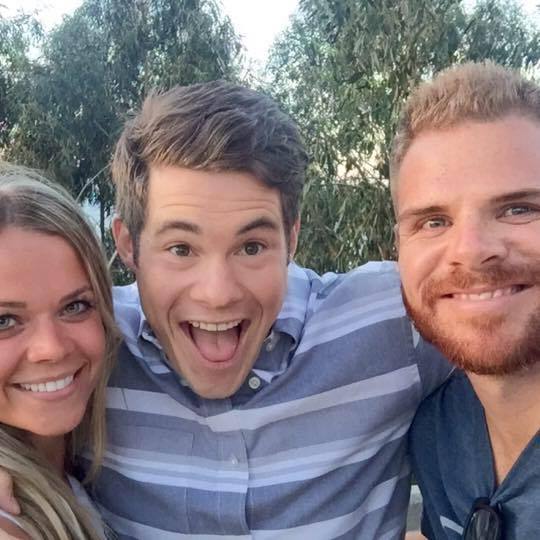
Adam Devine: spreading love

Aaron Goldenberg: with a special lady
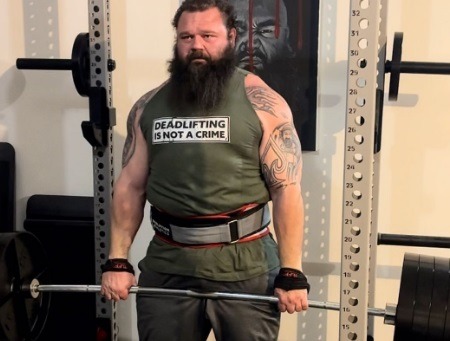
Robert Oberst: lifting weights

Skyler Gisondo: with his shirt off
2 notes
·
View notes
Photo

What Your Astrological Sign Needs to Read This Month
[via Penguin Random House]
Aries
Hell of a Book by Jason Mott
Taurus
The Palace Papers by Tina Brown
Gemini
The Dead Romantics by Ashley Poston
Cancer
Walking Gentry Home by Alora Young
Leo
Mademoiselle Revolution by Zoe Sivak
Virgo
When I’m Gone, Look for Me in the East by Quan Barry
Libra
The Girls in the Picture by Melanie Benjamin
Scorpio
Chronicles from the Land of the Happiest People on Earth by Wole Soyinka
Sagittarius
Greenwood by Michael Christie
Capricorn
Braking Day by Adam Oyebanji
Aquarius
Radical Curiosity by Seth Goldenberg
Pisces
Bittersweet by Susan Cain
11 notes
·
View notes
Photo
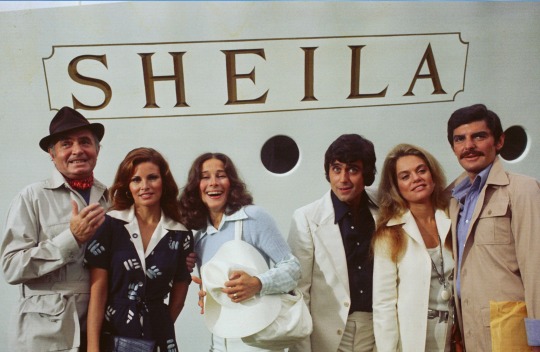
James Mason, Raquel Welch, Joan Hackett, Ian McShane, Dyan Cannon, and Richard Benjamin in The Last of Sheila (Herbert Ross, 1973)
Cast: Richard Benjamin, Dyan Cannon, James Coburn, Joan Hackett, James Mason, Ian McShane, Raquel Welch. Screenplay: Steven Sondheim, Anthony Perkins. Cinematography: Gerry Turpin. Production design: Ken Adam. Film editing: Edward Warschilka. Music: Billy Goldenberg.
Actor Anthony Perkins and songwriter Stephen Sondheim moonlighted as screenwriters to create this jeu d'esprit, a murder mystery involving the kind of elaborate games that Perkins and Sondheim and their friends used to play: treasure hunts with ingenious clues. The setup is this: A year earlier, Sheila, the wife of film producer Clifton Green (James Coburn), was killed in a hit-and-run accident. Green invites six people who were at a party the night of her death to spend a week on his yacht, which is named for her. Before they board, he arranges them for a photo under her name on the prow of the yacht. Then he announces that he is going to give each of them an envelope that contains a secret: something that a person would want to conceal about themselves. Each night, they will dock at a different location and will be given a clue that they must follow to discover the secret. If the person who holds the card with the secret on it solves the puzzle, the hunt of the night is over. So, on the first night, the clues lead to the secret: "Shoplifter." And when Philip (James Mason), a washed-up film director who holds that clue, solves it, the game ends. But the next night, the game isn't completed: Green has been found murdered during the hunt. Meanwhile, realization dawns in the group that the secrets were their own: Philip wasn't a shoplifter, but the actress named Alice (Raquel Welch) admits that she once lifted a valuable fur coat from a store. And when the secret for the night Green is killed is revealed to be "Homosexual," Tom (Richard Benjamin), a screenwriter, admits that he and Green once had a brief affair. And so it appears that Green was murdered by someone who didn't want their secret to come out. But just when it appears that the murder has been solved, there's another intricate twist. The screenplay is fiendishly clever, and it's well acted: The other players include Dyan Cannon as a high-powered agent, Joan Hackett as Tom's rich heiress wife, and Ian McShane as Alice's manager-husband. Unfortunately, Herbert Ross directs things a little clunkily, although some of the awkwardness may come from the fact that shooting began on the yacht itself, but bad weather held up the shoot and sets eventually had to be constructed on a soundstage. There was also reportedly some conflict among the cast members and the director, centering on Welch. Today, some of the film's attitudes seem a little antique: Homosexuality is no longer such a terrible secret, although at the time Perkins and Sondheim, both of whom were gay, were still closeted. And perhaps not enough is made of the fact that one of the clues outs a character as a former child molester. The resulting film is something like a soufflé that didn't rise, turning out tasty but a little lumpy. The best moments belong to, not surprisingly, Cannon, one of those performers who make every film they're in a little better.
#The Last of Sheila#Herbert Ross#James Mason#Raquel Welch#Joan Hackett#Ian McShane#Dyan Cannon#Richard Benjamin
3 notes
·
View notes
Text
Das Domino Komplott
Story: Der ausgebrannte Vietnam-Veteran und Scharfschütze Tucker ist mit einer Haftstrafe wegen Mordes am Boden der Tatsachen angelangt. Doch er bekommt eine unerwartete zweite Chance: Alles, was er tun muss, um aus der Haft entlassen zu werden, ist jemanden umzubringen…
(more…)
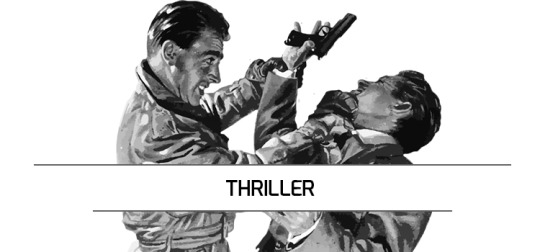
View On WordPress
#70er Jahre#Action#Adam Kennedy#Al Waxman#Auftragsmord#Ben Cross#Billy Goldenberg#Brent Jennings#Ernest Laszlo#Flucht in Ketten#Fred J. Koenekamp#Lisa Eilbacher#Martin Starger#Philip Baker Hall#Pierce Brosnan#Politik Thriller#Ron Silver#Scharfschütze#Stanley Kramer#The Domino Principle#Thriller#Tony Plana#Vietnam-Veteran
0 notes
Photo
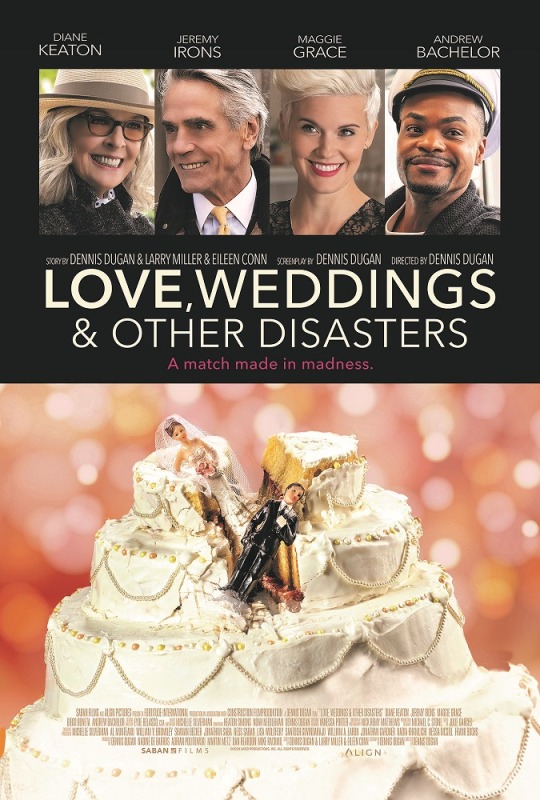
LOVE, WEDDINGS & OTHER DISASTERS (2020)
Starring Diane Keaton, Jeremy Irons, Maggie Grace, Diego Boneta, Andrew Bachelor, Andy Goldenberg, Melinda Hill, Caroline Portu, Jesse McCartney, JinJoo Lee, Rachel Wirtz, Veronica Ferres, Dennis Staroselsky, Todd Stashwick, Abbey Dubin, William Xifaras, Chandra West, Richard Kline, Elle King, Keaton Simons and Dennis Dugan.
Screenplay by Dennis Dugan.
Directed by Dennis Dugan.
Distributed by Saban Films. 96 minutes. Rated PG-13.
While Diane Keaton has been in more of her fair share of god-awful comedies over the years – Because I Said So or Poms, anyone? – it is still kind of disheartening to see such a wonderful, eccentric talent as Keaton stuck in crap like Love, Weddings & Other Disasters.
At least Keaton has a relatively smallish role in this ensemble misfire, and her character – a sightless woman who is set up on a blind date (blind date, gettit?) with a stuffy, OCD-afflicted caterer to the stars (Jeremy Irons) – is one of the less annoying characters in the film. Still, she (and Irons, for that matter) are way too good as actors to be stuck in a stink bomb like this.
Disasters is probably the defining word in the title of this cheeseball, silly rom-com. Figuratively, of course, but also literally.
We are introduced to Jessie (Maggie Grace), a young wannabe wedding planner, while her boyfriend is dumping her in the middle of a skydive, of all times. Of course, they end up crash landing in the middle of an outdoor wedding, and a video of Jessie knocking the bride and groom into a lake goes viral immediately, to the point when a mere day later, everyone in the world (it seems) recognizes her as the “Wedding Trasher” from Instagram.
It’s bad timing, because Jessie is up for her dream job, planning the wedding for the potential future mayor of Boston. The future politico is afraid Jessie will be too much bad publicity, but his bride-to-be takes a liking to the cute wedding planner. Jessie befriends a cute singer (Diego Bonita) who she wants to play the wedding, but the guy’s band is falling apart because his partner (Jesse McCartney) is falling for a cute new guitarist.
In the meantime, the future mayor’s loser brother (Andy Goldenberg) signs up for perhaps the slimiest reality game show ever, where the contestants have to find love by being chained to the other person for days on end. His partner in the show is a pretty Russian lawyer (Melinda Hill) who turns out to be a stripper (don’t ask…)
And did I forget the Captain of the local duck boat tour (Andrew Bachelor) who spends the entire film looking for a Cinderella fan at a bachelorette party who left her glass slipper on the tour boat? Yeah, I almost did.
There are more characters and stories strewn about in Love, Weddings & Other Disasters, but believe it or not they are even less interesting, and less likable.
Love, Weddings & Other Disasters is essentially an overlong sitcom, and not a good one at that.
Sadly, you can’t expect much more from a film by Dennis Dugan, who was a decent enough light actor in the 1970s and 1980s, but since the 1990s has made a living directing some of the worst movies ever, including several starring his friend Adam Sandler.
If possible, Love, Weddings and Other Disasters misses Sandler’s subtle humor (I was being ironic there…). This may not be Dennis Dugan’s worst film (though it may, there is just so much competition for the title), but that’s hardly a selling point. Avoid this movie like the disaster it is.
Jay S. Jacobs
Copyright ©2021 PopEntertainment.com. All rights reserved. Posted: February 4, 2021.
2 notes
·
View notes
Text
Fabletics
Mr. Glitterati is very excited to announce Fabletics availability. I choose brands carefully and Fabletics couldn’t be more top shelf. #mrglitterati #glitterati #fabletics #katehudson
Mr. Glitterati is very excited to announce Fabletics availability. I choose brands carefully and Fabletics couldn’t be more in line with the top shelf brands and products here. Moreover, my female readers will certainly appreciate the deals and offerings I’m able to provide. Look for product availability in Mr. Glitterati’s store in the coming days and weeks.
Many are familiar with the brand,…
View On WordPress
0 notes
Text

In an open letter to the Academy, a long list of prominent filmmakers, including Oscar nominees and winners from branches including cinematographers, editors, production designers, sound and VFX, are calling for the decision to be reversed.
A lengthy list of leading filmmakers are blasting the Academy's plan to present four awards categories at the upcoming 91st Oscars during commercial breaks as "nothing less than an insult to those of us who have devoted our lives and passions to our chosen profession." They are calling for the Academy to reverse its decision.
Their remarks are part of an open letter that has been signed by such directors as Spike Lee, Martin Scorsese and Quentino Tarantino; cinematographers including Roger Deakins, Emmanuel "Chivo" Lubeski and Robert Richardson; editors Tom Cross, William Goldenberg and Mary Jo Markey; and additional past and present Oscar nominees and winners from those branches and others including production design, sound and VFX.
With the Feb. 24 awards show, set to air on ABC, just 11 days away, the Academy and the show's producers Donna Gigliotti and Glenn Weiss are now facing what is becoming an open revolt. The Academy did not immediately respond to requests for comment.
Relegating these essential cinematic crafts to lesser status in this 91st Academy Awards ceremony is nothing less than an insult to those of us who have devoted our lives and passions to our chosen profession," the letter reads. "When the recognition of those responsible for the creation of outstanding cinema is being diminished by the very institution whose purpose it is to protect it, then we are no longer upholding the spirit of the Academy’s promise to celebrate film as a collaborative art form."
In an email to the Academy membership on Monday, Academy president John Bailey, who belongs to the cinematographers branch, laid out the plan for this year's show, including the presentation of four Oscar categories — cinematography, film editing, live-action shorts and makeup and hairstyling — during commercial breaks. (This was first announced last year but without details and specific categories.)
Bailey emphasized that the Academy is "still honoring the achievements of all 24 awards on the Oscars." In the case of the four categories that will be announced during commercial breaks, the winners' speeches will air later in the broadcast, he said. The plans call for there to be a rotation each year, meaning that at least four different categories would use this format in 2020.
The complete letter follows. Additional names will be added at filmmakers' request.
An Open Letter to The Academy of Motion Picture Arts & Sciences and The Producers of the 91st Annual Academy Awards Broadcast:
On Monday, February 11, 2019, John Bailey, President of the Academy of Motion Picture Arts & Sciences, announced that this year’s Oscar presentations for Best Cinematography — along with Film Editing, Live Action Short and Makeup and Hairstyling — will not be broadcast live, but rather presented during a commercial break. This decision was made to reduce the length of the show from four hours to three. The vocal response from our peers and the immediate backlash from industry leaders over the Academy’s decision makes it clear that it’s not too late to have this decision reversed.
The Academy was founded in 1927 to recognize and uphold excellence in the cinematic arts, inspire imagination and help connect the world through the universal medium of motion pictures.
Unfortunately, we have drifted from this mission in our pursuit of presenting entertainment rather than in presenting a celebration of our art form and the people behind it.
Relegating these essential cinematic crafts to lesser status in this 91st Academy Awards ceremony is nothing less than an insult to those of us who have devoted our lives and passions to our chosen profession.
The show’s director, Glenn Weiss, has stated that he will determine what “emotionally resonant” moments from the four winners’ speeches will be selected to air later in the broadcast. The show will cut any additional comment from presenters, as well as any recitation of the nominees as they see fit.
We consider this abbreviation and potential censorship to run contrary to the spirit of the Academy’s mission.
Since its inception, the Academy Awards telecast has been altered over time to keep the format fresh, but never by sacrificing the integrity of the Academy’s original mission.
When the recognition of those responsible for the creation of outstanding cinema is being diminished by the very institution whose purpose it is to protect it, then we are no longer upholding the spirit of the Academy’s promise to celebrate film as a collaborative art form.
To quote our colleague Seth Rogen, “What better way to celebrate achievements in film than to NOT publicly honor the people whose job it is to literally film things.”
Signed,
Cinematographers
Dion Beebe
Bill Bennett
Roger Deakins
Peter Deming
Caleb Deschanel
Robert Elswit
Mauro Fiore
Greig Fraser
Janusz Kaminski
Ellen Kuras
Ed Lachman
Robert Legato
Emmanuel Lubezki
Anthony Dod Mantle
Seamus McGarvey
Chris Menges
Dan Mindel
Reed Morano
Rachel Morrison
Guillermo Navarro
Phedon Papamichael
Wally Pfister
Rodrigo Prieto
Robert Primes
Robert Richardson
Linus Sandgren
John Seale
Newton Thomas Sigel
Vittorio Storaro
John Toll
Hoyte van Hoytema
Kees van Oostrum
Roy Wagner
Directors
Damien Chazelle
Cary Joji Fukunaga
Spike Jonze
Ang Lee
Spike Lee
Dee Rees
Seth Rogen
Martin Scorsese
Quentin Tarantino
Filmmakers
Kym Barrett
Judy Becker
Alan Edward Bell
Erin Benach
Avril Beukes
Consolata Boyle
Maryann Brandon
Alexandra Byrne
Milena Canonero
Chris Corbould
Hank Corwin
Tom Cross
Nathan Crowley
Sophie De Rakoff
Chris Dickens
Bob Ducsay
Lou Eyrich
Dante Ferretti
Paul Franklin
Dana Glauberman
William Goldenberg
Affonso Goncalves
Adam Gough
Jon Gregory
Dorian Harris
Joanna Johnston
Paul Lambert
Mary Jo Markey
Joi McMillon
Ellen Mirojnick
Stephen Mirrione
Bob Murawski
John Ottman
Sandy Powell
Fred Raskin
Tatiana S. Riegel
Elísabet Ronaldsdóttir
Mayes Rubeo
Nat Sanders
J.D. Schwalm
Anna B. Sheppard
Terilyn A. Shropshire
Joan Sobel
Michael Tronick
Mark Ulano
Martin Walsh
David Wasco
Billy Weber
Julie Weiss
Michael Wilkinson
Hughes Winborne
Janty Yates
7 notes
·
View notes
Text
New Yorkers In High Stop-and-Frisk Areas Subject To More Facial Recognition Tech
Amnesty International says technology championed by mayor reinforces discriminatory policing against minority communities
— Gloria Oladipo | Tuesday 15 February 2022

A New York City police department surveillance camera in Times Square, New York. Volunteers have mapped 25,500 CCTV cameras throughout the city.
New Yorkers who live in areas where controversial stop-and-frisk searches happen most frequently are also more likely to be surveilled by facial recognition technology, according to research by Amnesty International and other researchers.
Research also showed that in the Brooklyn, Bronx and Queens boroughs of the city there was a direct correlation between the proportion of non-white residents and the concentration of controversial facial recognition technology.
“Our analysis shows that the NYPD’s use of facial recognition technology helps to reinforce discriminatory policing against minority communities in New York City,” said Matt Mahmoudi, artificial intelligence and human rights researcher at Amnesty International.
While the NYPD has been using facial recognition technology for more than a decade, its use has not been without controversy.
According to Politico, the NYPD has faced at least six lawsuits over its facial recognition technology use. Additionally, in June 2020, the New York city council mandated that the NYPD publicly disclose information on its surveillance efforts.
Despite local and national pushback to facial recognition technology, its use has been fully supported by New York’s mayor, Eric Adams, as a tool to investigate crimes.
“If you’re on Facebook, Instagram, Twitter – no matter what, they can see and identify who you are without violating the rights of people,” said Adams in January while discussing a new plan to solve gun violence in New York City. “It’s going to be used for investigatory purposes.”
Previously, the use of facial recognition technology has led to false arrests, all of Black men.
In 2019, Michael Oliver, a 25-year-old Black man from Detroit, was wrongly identified by facial recognition technology and arrested for grabbing a teacher’s cellphone and damaging it as the teacher was recording a fight among students.
Oliver was also wrongly identified by the teacher in a photo lineup.
In 2020, Robert Julian-Borchak Williams was falsely arrested by Detroit police after facial recognition technology incorrectly identified him as a shoplifting suspect.
In the same year, Nijeer Parks, 33, spent 10 days in jail and $5,000 to defend himself after being falsely accused of stealing candy and trying to hit a police officer with a car in Woodbridge, New Jersey.
Parks, who was wrongly identified by facial recognition technology, was 30 miles away when the incident took place. He is now suing the police department, the city of Woodbridge and the prosecutor on his case, according to the New York Times.
New York: Adams Eyes Expansion of Highly Controversial Police Surveillance Technology
The Democratic mayor’s bullishness and the resources at his fingertips stand to put New York at the forefront of an evolving national debate over safety, privacy and the racial and gender biases tied to the controversial software.
— By Sally Goldenberg and Joe Anuta | 02/08/2022 | Source: POLITICO
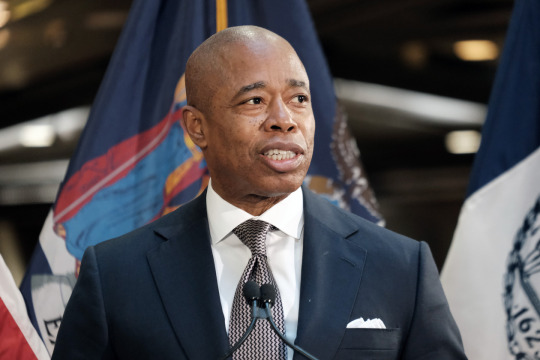
Eric Adams, a centrist Democrat, is so convinced modern technology can accurately and ethically help identify perpetrators of crimes he has incorporated it into his plan for fighting violent crime in New York. | Spencer Platt/Getty Images
NEW YORK — Civil rights groups sued over its constitutionality. State legislatures are studying its efficacy. San Francisco declared it antithetical to democracy.
But the mayor of the nation’s most populous city is fully embracing the use of facial recognition technology by the police and is now exploring a dramatic expansion in how it is used.
Eric Adams, a centrist Democrat, is so convinced modern technology can accurately and ethically help identify perpetrators of crimes he has incorporated it into his plan for fighting an outbreak of violence in New York.
“If you’re on Facebook, Instagram, Twitter — no matter what, they can see and identify who you are without violating the rights of people,” Adams said late last month as he pushed a new plan to end gun violence. “It’s going to be used for investigatory purposes.”
Facial recognition software has long been employed by governments across the world to assist in criminal probes and to screen people entering sensitive sites, from sports stadiums to customs checkpoints. An image captured from a surveillance video is compared to a photo database of known individuals, which increasingly includes billions of pictures scraped from social media. The software throws up a flag when, with some degree of probability, it spots a match.
But as other American cities have retreated from the technology or banned it altogether, Adams’ bullishness and the resources at his fingertips — the city is set to spend around $11 billion on the NYPD this budget cycle — stand to put New York at the forefront of an evolving national debate over safety, privacy and the racial and gender biases tied to the controversial software.
The NYPD has been using facial recognition technology for more than a decade, prompting at least six lawsuits and inspiring a New York statute mandating reams of public reporting. The same software used by the city, DataWorks Plus, led to the wrongful arrest of two men in Detroit.
Police officials have credited the tool with helping to solve murders, rapes and missing person cases, and they stress it is used fairly and only in a narrow capacity.
Now the mayor wants to go further.
“We will also move forward on using the latest in technology to identify problems, follow up on leads and collect evidence — from facial recognition technology to new tools that can spot those carrying weapons, we will use every available method to keep our people safe,” Adams, a retired police captain, said at a Jan. 24 press briefing.
A week later, he alluded to replacing metal detectors at public schools with new technology to scan students for weapons. A City Hall aide separately said the administration is exploring the use of infrared or thermal imaging cameras in the buildings.
The mayor’s zeal for high-tech policing tools was on display in his 15-page “Blueprint to End Gun Violence,” released last month on the heels of the shooting death of two NYPD officers responding to a 911 call of a domestic dispute. The document notes that new technologies used to identify suspects “will not be the sole means to make arrests, but as another tool as part of larger case-building effort.”
Those who have long warned about the department’s use of facial recognition technology were alarmed by the mayor’s plans.
“It just felt like the floor was dropping out from beneath me. To hear him this enamored with this sort of technology was incredibly disappointing,” Albert Fox Cahn, head of the nonprofit organization Surveillance Technology Oversight Project, said in an interview. “I was hopeful that he was someone uniquely positioned to push back against this sort of pseudo-science masquerading as public safety.”
The NYPD says it uses facial recognition to match surveillance or other crime-scene photos solely to its database of mugshots. But where law enforcement officers see an opportunity to close cases, watchdogs say the technology is largely unregulated, invades personal privacy and disproportionately targets people of color. The debate, which has played out in fits and starts in recent years, culminated in local legislation two years ago to mandate the NYPD regularly disclose details about its use of surveillance technology.
Adams is putting his faith in the software as he grapples with a scourge of gun violence — a matter he regards as the most profound problem facing the city, and one he discussed with President Joe Biden when the two met in New York last week.
“The city is at a critical turning point where we need to have more effective tools — plain and simple,” mayoral spokesperson Fabien Levy said. “The mayor is saying: Let’s study emerging technology and, if it’s effective, use it in a legal manner to make the streets safer while reasonably protecting the privacy of New Yorkers.”
Levy said the city would not use any software that results in biases against certain races or genders, though that is precisely what several facial recognition programs have been found to do. A 2019 study, for example, found that facial recognition programs across the country tended to be less accurate when analyzing Black or Asian individuals.
The NYPD’s use of facial recognition technology in particular was the subject of an unflattering report titled “Garbage In, Garbage Out,” penned in 2019 by privacy lawyer Clare Garvie.
“There are no rules when it comes to what images police can submit to face recognition algorithms to generate investigative leads,” Garvie wrote. “As a consequence, agencies across the country can — and do — submit all manner of ‘probe photos,’ photos of unknown individuals submitted for search against a police or driver license database.”
Garvie argued the pictures are sometimes poor quality or doctored through popular social media filters, rendering them unreliable evidence.
There have been at least three known cases of facial recognition resulting in a false arrest. In 2019, Detroit police used DataWorks Plus to identify 25-year-old Michael Oliver as a suspect in a theft case. An eyewitness later picked him in a lineup; he was arrested and falsely charged with a felony. Robert Julian-Borchak Williams was handcuffed on his front lawn in a Detroit suburb the following year, after the algorithm incorrectly identified him as a suspect in a theft case. That same year, New Jersey resident Nijeer Parks was jailed for 10 days after being falsely accused of stealing candy and attempting to hit a police officer with a car. He is now suing the township of Woodbridge.
NYPD has reported five misidentifications through its facial recognition technology between 2011 and 2017. But Supervising Attorney Jerome Greco of Legal Aid — which has represented clients in facial recognition cases and helped force the NYPD to disclose 58 private contracts with surveillance companies — said the criteria for what counts as a mismatch remains unclear.
And prior to a recent statewide change in the discovery process for criminal cases, the NYPD did not routinely disclose whether facial recognition was used at all. Thus, the true extent to which suspects have been falsely arrested or taken plea deals they otherwise might not have, based on faulty matches, will never be known.
“We’ve seen this already with stop and frisk,” he said, referring to the NYPD’s previous practice of conducting searches of mostly nonwhite New Yorkers with little pretext, which was found unconstitutional by a federal judge. “So you didn’t end up arresting someone, but you harassed the hell out of them. Why am I supposed to believe this is any different?”
Concerns like these led San Francisco, Seattle, Oakland and several other cities in America to ban the software altogether in recent years. Elsewhere, however, police forces have moved far beyond what Adams plans for New York City. Even the IRS has walked back a plan to use the software to confirm taxpayers’ identities following backlash from legislators and privacy groups.
London is rolling out a program that will scan the faces of pedestrians in real-time and run them through facial recognition software in an attempt to match them with a database of wanted individuals. The process is similar in scope to China’s surveillance of its citizenry. London leaders have defended it as a necessary tool to get dangerous people off the streets, especially in the wake of terror attacks that have rocked the city.
Police officials in New York say their more tailored use of facial recognition has been an invaluable tool for combating crime. Most major offenses with the exception of murder were up in January compared to the same time last year, according to NYPD statistics.
“It’s been very helpful in a lot of cases in identifying violent suspects in crimes — quite a few sexual-related assaults and shootings where they were able to identify or get a lead to enhance the investigation through the facial recognition,” Paul DiGiacomo, president of law enforcement union the Detectives’ Endowment Association, said in an interview. “These anti-police groups keep trying to take away the tools that detectives use to investigate crimes and bring closure to some of these families that lost loved ones.”
Facial recognition is also more accurate than eyewitness identification, and like DNA evidence, can assist in solving cold cases and exonerating innocent people when applied with proper human oversight, according to former NYPD Commissioner William Bratton. He penned an op-ed defending the practice in 2020.
Bratton is now with global consulting firm Teneo and sits on the board of Shotspotter, a technology used by the NYPD and other American police departments to triangulate the sound of gunshots. He slammed what he considers a trend of left-leaning legislatures reflexively opposing arming police with new investigatory capabilities. He cited as an example concerns raised over the NYPD’s testing of a canine robot named Digidog — equipped with a camera and microphone, and designed to trot into situations hazardous to humans — that ended up forcing the agency to cancel the tryout last year.
“So many policies advanced by the progressive left are actually harming the people they are trying to protect,” Bratton, who served under former mayors Rudy Giuliani and Bill de Blasio, said in an interview. “And AOC’s comments on that robot are the case in point.”
Last February, Rep. Alexandria Ocasio-Cortez argued that the $75,000 device epitomized excess police funding and a willingness to infringe on the civil rights of New Yorkers with low incomes.
Her comments followed the New York City Council’s passage of the Public Oversight of Surveillance Technology Act, which monitors the police department’s use of technology. It was hastened by clashes between NYPD officers and protesters following the murder of George Floyd.
The bill requires public reporting. So far it has yielded 36 disclosures around the department’s monitoring of both cryptocurrency and social media, as well as a system that can locate phones or computers using a WiFi signal. It also mandates the city Department of Investigation annually produce an oversight report, which a spokesperson said is due in April.
Among the sponsors of the measure were Adrienne Adams, who now leads the 51-member Council, and Brad Lander, the recently-elected city comptroller with oversight of NYPD spending. Both are Democrats.
“When it comes to increasing the use of surveillance tools like facial recognition, we first have to ask – what safeguards are we using to protect civil rights?” Lander asked in a statement. “Facial recognition is notoriously inaccurate when it comes to identifying people of color generally and women of color in particular. We shouldn’t rush into expanding the use of technology that may increase the risk of racial profiling and false arrests.”
Lander’s predecessor, Democrat Scott Stringer, notified former Police Commissioner Dermot Shea in 2020 that he would begin compiling the NYPD’s contracts with surveillance companies, after being kept in the dark about the agency spending for years due to an earlier agreement allowing the department to bypass standard procurement rules for surveillance materials.
Shea’s subsequent disclosures made no mention of the NYPD’s murky relationship with Clearview AI — a company that scrapes billions of public photographs from social media sites without permission and distributes the information to police officers across the country.
Former NYPD Commissioner Raymond Kelly sits on the company’s advisory board. The police department has no formal agreement with the firm, but Legal Aid obtained emails documenting the relationship. Fox Cahn believes officers continue to utilize the software through individual trial accounts — something the NYPD strongly denied.
The department said it is constantly updating its guidelines as new technologies emerge, and changed its facial recognition rules to ban the use of Clearview AI in 2020.
The NYPD’s software is regularly reviewed by the National Institute of Standards and Technology to assess its accuracy and compare demographic data. Matches cannot be used as the sole basis for an arrest, and its policies are now clearly posted for the public to comment on, department spokesperson Jessica McRorie, a police sergeant, said in an email.
“In response to studies around bias, we recognize that there are concerns,” McRorie said. “This is why facial recognition is used in combination with human analysis, as NYPD human investigators are integrated into all the phases of the process and facial recognition findings are reviewed by these investigators.”
New York City Public Advocate Jumaane Williams, who is running for governor in the June Democratic primary, voiced support for some of the NYPD’s high-tech tools, like ShotSpotter. But he firmly opposes the use of facial recognition, citing concerns over flawed algorithms and what he views as undue privacy violations. He is part of Amnesty International’s Ban the Scan coalition, which seeks to outlaw the use of the technology in New York City.
“There is always a willingness to give up civil liberties when it is to protect yourself from ‘the other,’” he said. “But we have to strike a balance. And especially with the inherent flaws and concerns about data, I think [facial recognition] tips that balance.”
0 notes
Text
Midwinter Day Reader List
Here is our up to date list of confirmed readers for St. Rocco’s 4th Annual Midwinter Day Marathon on December 18th, 2021. Register on Eventbrite to watch, and be sure to donate to Bernadette’s fundraiser!
Part 1 (Beginning at 3pm)
Bernadette Mayer
Shelly Marlow
Laura Henriksen
Vincent Katz
Lydia Davis
Cat Tyc
Jennifer Firestone
Laura McLean-Ferris
Alexis Bhagat
Shanna Compton
Oliver Ray
Emily Brown
Hana van der Kolk
Kyle Schlesinger
Luisa Giuliano
Tess Caroline
Sophia Dahlin
Yasmine Shamma
Violet Spurlock
Michelle Tea
Eleni Siklianos
Elisa Albert
max warsh
Part 2 (Beginning around 4pm)
Brenda Coultas
Matthew Klane
Julie Patton
Christina Strong
Marcella Durand
Part 3 (Beginning around 4:30pm)
Liz Janoff
Marie Warsh
Mo Ritter
Kay Gabriel
Nada Gordon
Lynne Sachs
Chris Kraus
Lee Ann Brown
Laynie Browne
Phil Good
Part 4 (Beginning around 5:15pm)
Katy Bohinc
Bethany Ides
TBC
Aida Muratoglu
Michael Ruby
Sophia Warsh
Jenn McCreary
Suzanne Goldenberg
Dorothea Lasky
Alystyre Julian
Eileen Myles
Kennedy Coyne
tanner menard
Raymond Maxwell
Kenning JP Garcia
Part 5 (Beginning around 6:00pm, or earlier, or later)
JJ Rowan
TBC
Rebecca Wolff
Don Yorty
Joe Elliot
Ray Daniels
Lisa Jarnot
Adam Fitzgerald
Sarah Archer
Anna Gurton-Wachter
Part 6 (Beginning around 7pm, or earlier, or later)
Sam Truitt
Elizabeth Guthrie
Sarah Steadman
Shira Dentz
Rider Alsop
Thom Donovan
Tara Ahmadinejad
Becca Klaver
Erica Dawn Lyle
Sara Jane Stoner
Kimberly Alidio
Stacy Szymaszek
Tony Torn
Elizabeth Willis
Anne Waldman
0 notes